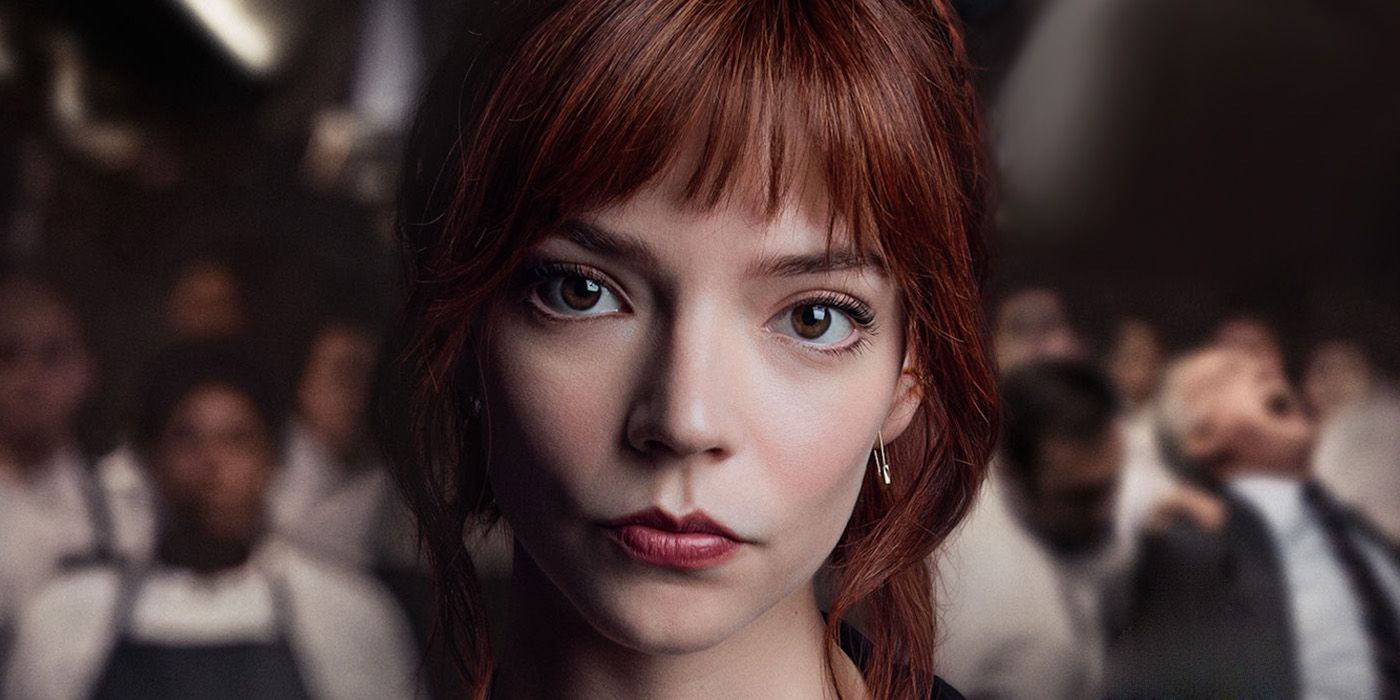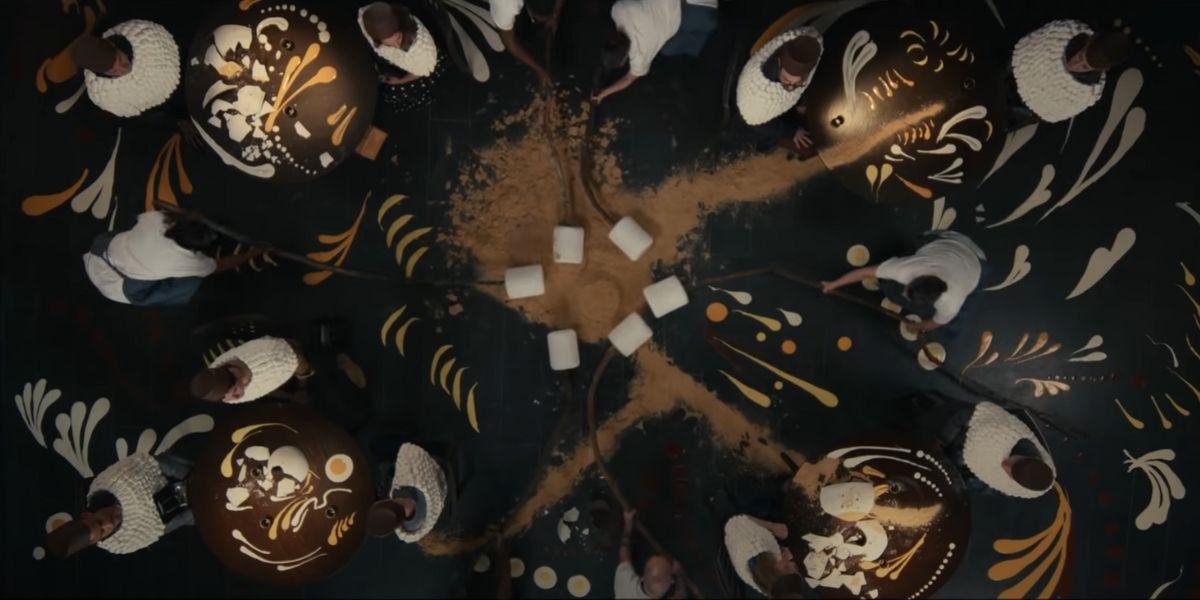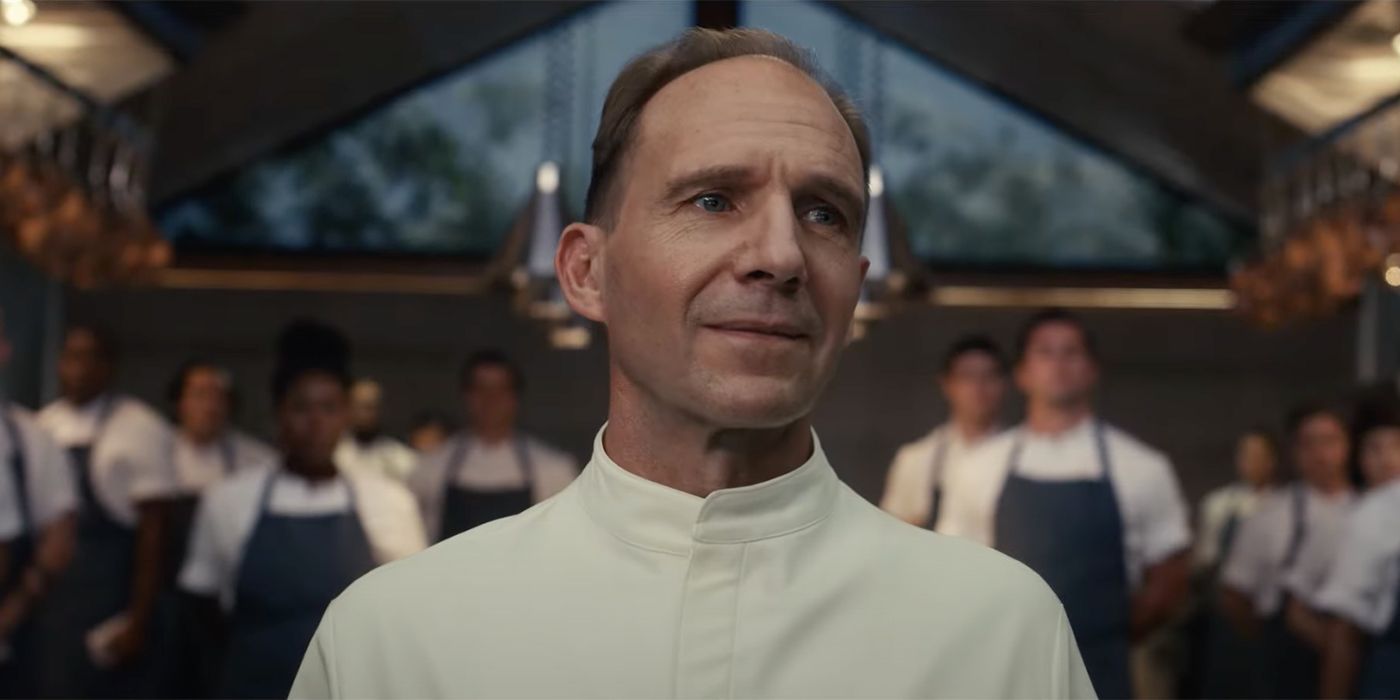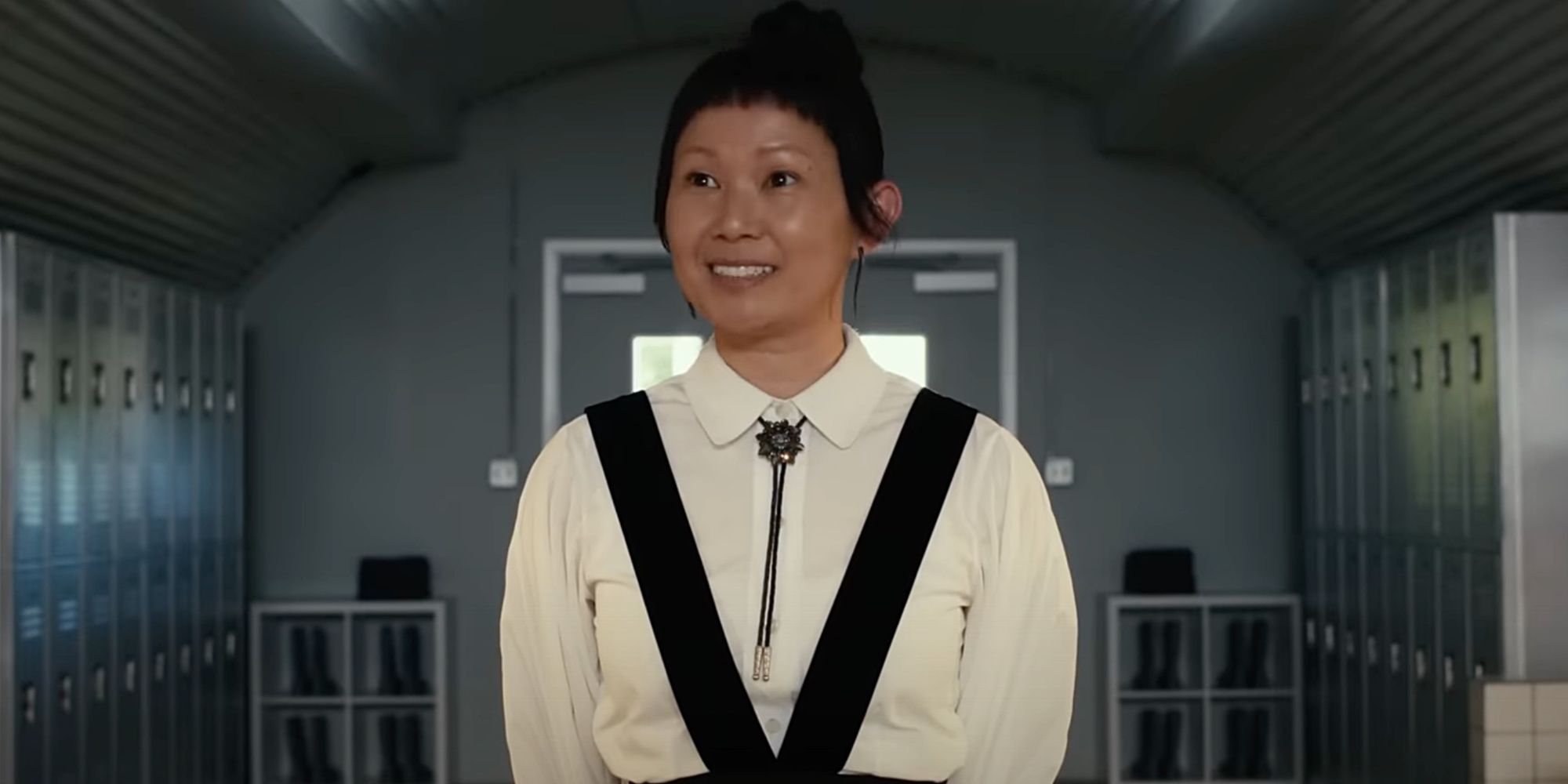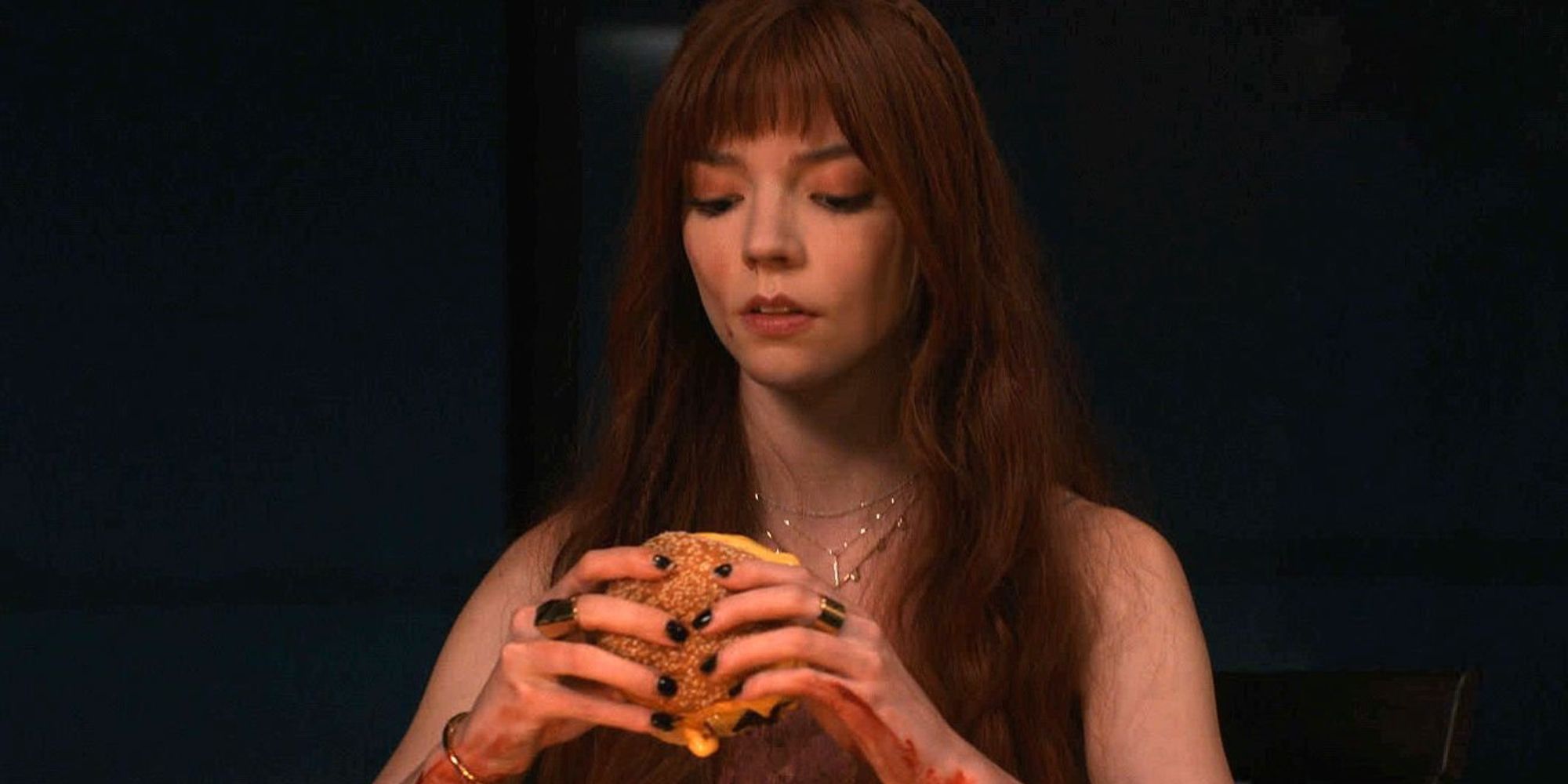The Big Picture
- 'The Menu' portrays the archetypes of patrons in the food service industry, with characters representing different stereotypical customer behaviors, such as entitlement and nitpicking.
- The film showcases the frustrations and experiences of service workers, who often have to deal with difficult customers and criticism. It highlights their fantasies of standing up to these customers and not putting up with their behavior.
- 'The Menu' explores themes of revenge and catharsis in a dark comedic way, as the staff of the restaurant enacts their fantasies by serving their demanding customers their just desserts, punishing them for their behavior.
When I walked into the theater to see Mark Mylod's dark comedic thriller The Menu, I expected a mysterious, foodie-themed story with a creepy atmosphere and some kind of twist. I did not expect to see all of my darkest fantasies about working in the food service industry played out in front of me, and yet that is exactly what happened.
Anyone who has worked in any service job will immediately recognize the archetypes in the patrons of Hawthorne. There's the customer who wants to make sure you know that he's friends with the boss (even if he really isn't), in this case, a washed-up actor played by John Leguizamo. There's the nitpicker who points out the tiniest error in an otherwise perfect presentation--speaking at full volume, of course, as if the cooks who work eighteen-hour days to create these masterpieces of food aren't standing right there and can't hear every word she says. There are the "do you know who we are" complainers, who believe that every service worker can and will cater to anything they ask because they're just that important, represented by the young tech bros. There are the bored wealthy elites who are completely oblivious to their own privilege. And finally, there is poor Tyler (Nicholas Hoult), who is desperate to show off his knowledge to the staff, to prove that he's just as smart and talented as they are.
Every service worker who has stood on their feet for a grueling eight-, ten-, or twelve-hour shift, who has struggled to create perfection for impossible-to-please customers, who has stood by, exhausted, while those customers criticize and complain – sometimes to your face, and sometimes talking to each other as though you don't exist at all--knows the patrons of Hawthorne. And they know exactly how a once passionate man like Chef Julian Slowik (Ralph Fiennes) can be driven to burning it to the ground. But before they send Hawthorne and everyone in it up in flames, the staff get to enact the fantasy that every service worker dreams of: not putting up with their customers' crap.
In 'The Menu,' Every Patron Gets Their Just Desserts
When food critic Lillian Bloom (Janet McTeer) sneers at a broken emulsion, incredulous that such an egregious error would appear in a dish at such a fine restaurant, and in full hearing of the entire staff (who are literally only a few feet away), the cooks reward her with an entire bowl of it, and then another one. They almost literally throw her complaint back in her face, and they present it with a smile.
When the wealthy Richard and Anne Liebbrandt – who have been privileged to visit Hawthorne eleven times, at $1,250 each per visit – can't name a single dish they've eaten in the past, Chef Slowik has one of Richard's fingers cut off. This might seem like an extreme reaction, but remember that even after a man has shot himself in the head in front of them, the food critic somehow still believes that this entire presentation is theater for her benefit. The narcissism among this crowd is astonishing; only the most extreme reactions will cut through it.
Even Chef Slowik himself gets his comeuppance. When Chef Katherine accuses him of sexually harassing her, and then of shunning her for months after she refused his advances, he doesn't deny it. Then she gets to do what any worker who has been targeted or harassed by a dictatorial boss dreams of doing – she stabs him. And instead of lashing out, he accepts his punishment, and the two make peace.
But my personal favorite is perhaps the simplest act of defiance. Early in the meal, the Hawthorne cooks serve a bread course with no bread. As Chef explains, bread is the food of common people all over the world, and his patrons are not those kinds of people; therefore, they get no bread. The tech bros, rather than delighting in the novelty, the experience, and the history lesson they have been gifted, are annoyed that they've paid $1,250 apiece for accouterments with no bread. They play the I-hate-to-do-this-but-do-you-know-who-we-are card with the unflappable maitre d’, Elsa (Hong Chau), and demand bread (and a gluten-free option, no less). She responds, simply, "no."
Service workers know the awkwardness and dread that comes with having to refuse the request of a demanding customer, especially one that you know is likely to retaliate. We couch our refusals in apologies and excuses: "I'm so sorry," "I really wish I could do that for you," "How can I make it up to you?" The vicarious satisfaction I experienced when Elsa smiles, says "no," and walks away was a catharsis I didn't know I needed.
'The Menu' Is Revenge Fantasy at Its Most Delicious
Cooking is more than Chef Slowik's passion, it's his life. Even his house is a perfect replica of the restaurant, in which he sleeps on a modest single bed. At the beginning of the meal, he makes one request of the customers: don't just eat, but savor. Appreciate. Enjoy. Then, night after night, he watches these ungrateful boors shove the food into their faces while they babble and argue and complain as if he is not standing ten feet away from them. They have destroyed his passion, ruined the one thing that brought him joy. As he himself says, "I've been fooled into trying to satisfy people who can never be satisfied."
So in the dessert course, when the cooks turn their customers into human S'mores, we understand how they were driven to this point. And the customers, having had their sins presented to them on laser-engraved tortillas, accept their fate. They recognize that they are irredeemable and, perhaps more to the point, powerless, and they sit helplessly as the cooks dress them in marshmallow shawls and chocolate hats and roast them alive.
Tyler, at first, seems to be the exception to this hateful group. He really does appreciate the food; he really is grateful to be there. His flaw – that he is a try-hard desperate to prove himself and earn Chef's approval (and that he can't stop photographing the food) – seems minor compared to those of the other patrons. But when it's revealed that he knew that everyone would die, and he hired Margot (Anya Taylor-Joy) to join him anyway because he wouldn't be able to get a reservation alone, we understand that he, too, is a monster. He's obsessed with the food but oblivious to the people who make it, revealed by the fact that he has sentenced Margot – who Chef recognizes as a fellow service industry professional – to death just so he can get a seat at the table. Chef first gives him the praise and validation he is desperate for, then humiliates him by putting him in the position of the staff he has dehumanized, forcing him to cook on the spot with no preparation. When he fails miserably, he realizes that he has been pretending at something that they have trained their whole lives for, and he can't live with his own shame.
The Menu is the heir to workplace comedies like Clerks and Office Space, which gave working class audiences a chance to realize their fantasies of telling their customers and bosses exactly what they think of them; the latter even features an ending where a mistreated employee finally snaps and burns down the building. The Menu, though, is more sophisticated and much darker, perhaps an indication that in 2022, after living and working through recessions and a global pandemic and skyrocketing inflation that has not been accounted for in wages and tips, some service workers really are ready to burn the whole place down.

